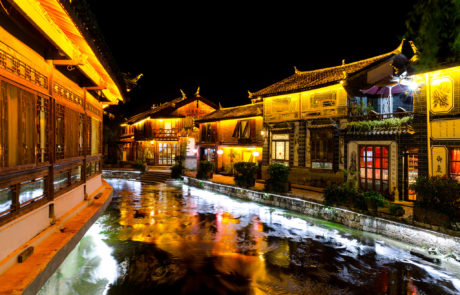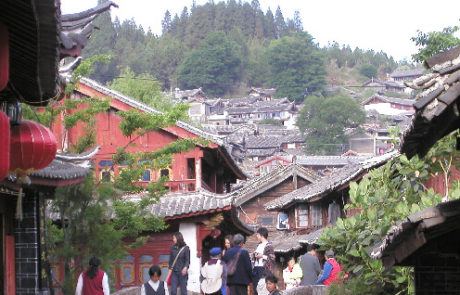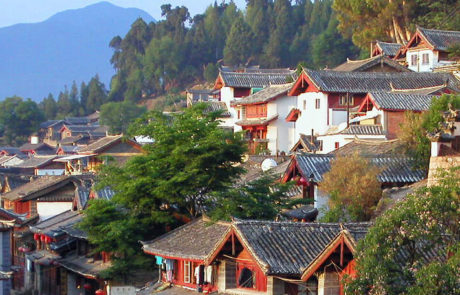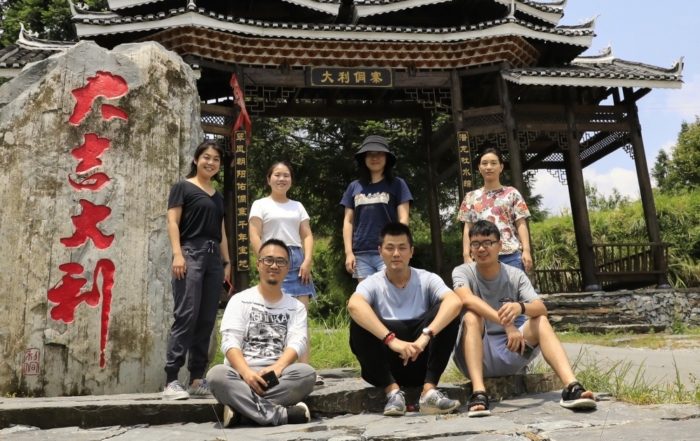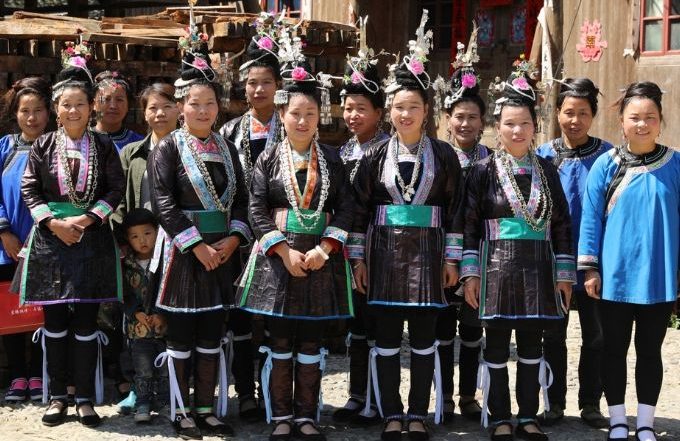Lijiang, China
At the northern reaches of China’s southern Yunnan province sits a historic town, a rarity in this country, that once served as a vital stop along the Ancient Tea and Horse Caravan Road, the trade route linking Tibet with Yunnan and Sichuan, long known as China’s “storehouse of heaven.” Largely intact, Lijiang Ancient Town still counts over 4,000 native families within its Core and Protected Areas, most of them ethnic Naxi people who preserve much of their unique Dongba culture. A UNESCO World Heritage Site since 1997, Lijiang Ancient Town is among the most popular tourist spots in China with over ten million visitors annually drawn to this enchanting maze of canals crisscrossed by footbridges and cobblestone streets lined with tiny storefronts proffering Naxi embroideries and rustic black clay pottery.
To authentically restore this built heritage with its wing tipped rooflines while supporting living culture and restricting over-tourism, Global Heritage Fund partnered with Lijiang Ancient Town Management Committee, UNESCO World Heritage Centre Asia Pacific and Shanghai TongJi University’s Urban Planning and Design Institute to complete Lijiang’s first Master Conservation and Site Management Plan. Through the Lijiang Conservation Trust, our public-private initiative to rehabilitate traditional residences and to invest in the historic district’s infrastructure, we provided micro-loans and subsidies to native Naxi families, allowing them to remain in the historic quarter by assisting them with costly, authentic restorations. Architectural guidelines set strict regulations on construction, building codes and signage while our historic preservation guidebooks graphically demonstrated conservation and restoration methods to residents, contractors and builders. Our protection plan for buildings in the Dayan Old Town Core focused on maintaining architectural integrity while applying modern techniques to consolidate and to enable earthquake resistance. Altogether we authentically restored over 400 historic buildings including more than 250 traditional Naxi home exteriors while over 300 modern concrete buildings were removed. Comprehensive planning appropriately rescaled the cultural tourism industry operating in the historic district, whittling down the proliferation of handicraft stores by three-quarters to around 350 establishments.
In recognition of these far-reaching social, economic and conservation efforts, Lijiang Ancient Town received the UNESCO Asia Pacific Heritage Award of Merit, with UNESCO experts praising this innovative collaboration as “a significant step forward in public-private efforts to safeguard vernacular heritage.”


